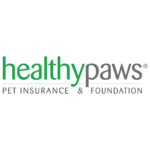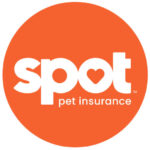Best Pet Insurance For Greyhounds In March, 2025
From my professional perspective, Healthy Paws is the top pick for Greyhounds pet insurance.
We’ve saved shoppers an average of $350 per year on their pet insurance.
Greyhound owners are often concerned about their pets’ health. Purebred Greyhounds are more susceptible to genetic health problems than mixed breeds. It’s unfortunate that 4 out of 5 pet parents can’t afford an unexpected $500 vet bill out of pocket. Pet insurance can help manage that financial risk.
In this review, we’ll cover some of the top pet insurance options for Greyhounds, so you can choose the best plan for your pet. Pet insurance works similarly to human health insurance by providing better care and reducing out-of-pocket expenses. However, it’s much more affordable than private health insurance.
Best Pet Insurance Companies For Greyhounds, 2025
Several pet insurance providers for Greyhounds offer comparable benefits such as pet care and financial security, yet they have unique characteristics. The optimal choice may vary between Greyhounds. Here’s our overview of top pet insurance companies for Greyhounds.



Comparison Of The Best Pet Insurance Companies For Greyhounds
We've outlined the best pet insurance companies for Greyhounds, highlighting their unique strengths.
| Overall Rating | Best For | Waiting Period | Reimbursement % | Benefit Limit | Get A Quote | |
|---|---|---|---|---|---|---|
| Healthy Paws |
|
Overall |
15 days accidents/illness |
70%,80%,90% |
Unlimited annual and lifetime |
Instant Quote |
| Lemonade |
|
Cheap |
2 days accidents, 14 days illness |
70%,80%,90% |
$5,000 to $100,000 annually |
Instant Quote |
| ManyPets |
|
Puppies |
15 days accidents/illness |
70% or 80% |
Unlimited annual and lifetime |
Instant Quote |
| Pumpkin |
|
Older Dogs |
14 days accidents/illness |
90% |
$10,000 , $20,000 or unlimited |
Instant Quote |
| Spot |
|
Multiple Pets |
14 days accidents/illness |
70%,80%, 90% |
$2,500 to unlimited |
Detailed Reviews Of The Best Greyhound Insurance Companies
Best Overall
Key Statistics
Why We Like Them
⇅Healthy Paws stands out in pet insurance with unlimited claim payouts and no per-incident maximums or caps. This prevents difficult decisions about your pet’s health due to policy restrictions. Their policy is simple, without expensive add-ons, and they accept visits to any licensed vet. Submitting claims is straightforward through their mobile app or website, with most claims processed in just two days.
Benefits & Drawbacks
⇅- Annual or lifetime payouts are not capped.
- Return it within 30 days for a full refund.
- Our goal is to finalize claims within a 48-hour timeframe.
- You might be able to pay the veterinarian directly. ✓
- No standard health care option exists. ✘
Runner-Up For Best Overall
Key Statistics
Why We Like Them
⇅Lemonade is considered the most affordable option for pet insurance for Greyhounds. While their coverage limits range from $5,000 to $100,000 per year, which is comparable to other reviewed companies, they do not provide unlimited coverage like Healthy Paws. Lemonade’s standard policy covers accidents, illnesses including cancer and heart disease, as well as common conditions like broken bones and hip dysplasia in older Greyhounds. However, they do not cover preexisting conditions, dental problems, behavioral issues, or elective procedures, which is standard among most insurers.
Benefits & Drawbacks
⇅- Opt-in for a wellness program.
- Only a two-day wait for accident insurance to take effect.
- Get a 10% discount by combining pet insurance with Lemonade's home, renters, or car insurance. ✓
- There isn't a pet telehealth line that operates 24/7.
- Vet exam fee coverage is available for an additional cost.
- Expenses related to prescription food and microchipping are not reimbursable. ✘
Best For Puppies
Key Statistics
Why We Like Them
⇅ManyPets provides top-notch insurance coverage for puppies. Pre-existing conditions do not impact premiums, and treated conditions may be covered after 18 months. Unrelated conditions remain eligible for coverage. Young Greyhounds, like all puppies, are susceptible to illnesses like poisoning, ingestion of foreign objects, and accidents due to their energetic nature. Insuring them early significantly reduces the risk of exclusions for pre-existing conditions later on.
Benefits & Drawbacks
⇅- Accessible across more than 40 states
- Covers veterinary examination fees for illness and injury cases.
- Introduces optional health plans. ✓
- No pet telehealth support is available around the clock.
- Pet behavioral treatments are not within the coverage.
- Insurance does not extend to alternative healing practices. ✘
Best For Older Dogs
Key Statistics
Why We Like Them
⇅As Greyhounds age, they become prone to genetic diseases like cruciate ligament issues and hip dysplasia, which can necessitate expensive treatments. Pumpkin pet insurance offers immediate coverage for these conditions without waiting periods and includes reimbursement for veterinary exams when treating older Greyhounds . They provide multiple coverage options for various Greyhounds health concerns, including surgeries and dental ailments, with options for deductibles and a standard 90% reimbursement rate.
Benefits & Drawbacks
⇅- Choose to participate in wellness options
- Discounts offered for insuring several pets at once.
- Claim a 90% refund for dogs and cats that are at least 8 weeks old. ✓
- There's no all-day, everyday pet health advice hotline.
- A plan that covers just accidents isn't on offer. ✘
Best For Multiple Pets
Key Statistics
Why We Like Them
⇅Many Greyhounds owners have multiple pets because they are known for their friendly nature. Spot provides a 10% discount for insuring more than one pet, which can lead to substantial savings. Their optional preventive care plan covers wellness services such as an annual vet visit, fecal test, and teeth cleaning, and includes some vaccinations. Spot offers a 30-day money-back guarantee if you’re unsatisfied with their coverage or service. They also reimburse up to 90% of eligible vet expenses and provide a 24/7 vet helpline. Plus, you can visit any U.S.-licensed veterinarian or specialist.
Benefits & Drawbacks
⇅- Encompasses microchip insertion
- Choose a deductible that begins at $100.
- Provides pet telehealth consultations around the clock. ✓
- When dealing with accidents, you'll face a 14-day waiting period, whereas others may only require 2 days. ✘
Common Health Issues For Greyhounds
Purebred dogs like Greyhounds are known to be at a higher risk for health issues. Over the years, some breeders have not paid close attention to genetics when breeding Greyhounds , resulting in health problems becoming more common within the breed. This has made Greyhounds more prone to genetic conditions compared to other dog breeds.
Here are some of the most frequent health issues Greyhounds experience:
- Osteosarcoma (bone cancer)
- Bloat (Gastric Torsion)
- Heart issues (particularly dilated cardiomyopathy)
- Hypothyroidism
- Ocular conditions (such as cataracts and retinal atrophy)
- Hip Dysplasia
- Skin issues (including sensitivity and thin coat)
Is Pet Insurance Worth It For Greyhounds?
Pet insurance helps cover unexpected veterinary expenses. While many people pay for their pets’ medical needs out of pocket, the majority can’t afford a $1,500 emergency bill. With the right insurance, you can focus on your pet’s care rather than the cost. Whether pet insurance is worth it depends on what you expect. If your pet has an ongoing condition and you need help with treatment costs, you may be disappointed since no policy covers preexisting conditions. But if you understand what your plan does and doesn’t cover and pick one that fits your budget, it will likely prove valuable.
Average Cost Of Pet Insurance For Greyhounds
| Company | Deductible | Annual Reimbursement % | Monthly Price | Age of Dog |
| Healthy Paws | $500 | 70% | $70.30 | 5 year old |
| Lemonade | $500 | 70% | $40.00 | 5 year old |
| Spot | $500 | 70% | $73.34 | 5 year old |
| Healthy Paws | $500 | 80% | $36.52 | 1 year old |
| Lemonade | $500 | 80% | $20.67 | 1 year old |
| Spot | $500 | 80% | $53.80 | 1 year old |
| Healthy Paws | $500 | 70% | $37.64 | 3 month old |
| Lemonade | $500 | 70% | $29.13 | 3 month old |
| Spot | $500 | 70% | $83.12 | 3 month old |
Average Cost Of Typical Vet Procedures
| Typical Vet Procedure | Average Cost Of Procedure |
| Puppy vaccinations | $75-100 |
| Flea & tick prevention | $40-200 |
| Heartworm prevention | $24-120 |
| Spay or neuter surgery | $200-800 |
| Annual exam | $240-600 |
| Teeth cleaning | $200-500 |
| Microchip | $40 |
Average Cost Of Emergency Vet Procedures
| Emergency Pet Procedure | Average Cost Of Procedure |
| General consultation/exam | $100-$150 |
| General bloodwork | $80-200 |
| X-rays | $150-$250 |
| Ultrasound | $300-$600 |
| 1-2 day hospitalization | $600-$1,700 |
| 3-5 day hospitalization | $1,500-$3,500 |
| Wound treatment & repair | $800-$1,500 |
| Emergency surgery | $800-$2,500 |
| Oxygen therapy | $500 |
How To Find The Best Pet Insurance Company For You
Choosing a pet insurance plan can be challenging due to the varying costs and types offered by different companies. Use these tips to help find the best plan for your pet before applying for coverage.
Check Whether Your Pet Is Eligible
For insurance coverage, puppies and kittens generally need to be between 6 and 10 weeks old, depending on the company. Senior pets might not qualify for initial enrollment or could only receive accident coverage. Once enrolled, though, most plans ensure coverage for life as long as premiums are paid.
Research What’s Covered
Pet insurance often covers surgeries, hospitalizations, and medications when your pet is ill or injured. However, certain things may require extra fees or are not covered at all. For instance:
- Exam fees: Some policies cover X-rays and surgery but not the vet’s exam fee.
- Alternative therapies: Some policies include acupuncture and physical therapy, while others charge extra for these services.
- Behavioral treatment: Many policies do not cover behavioral therapy for aggression or similar issues.
- Prescription food: Some policies do not cover prescribed food or supplements.
- Dental care: Coverage for dental issues like gingivitis may only be included if your pet has had a recent cleaning. Wellness plans might cover routine cleanings.
Pre-existing conditions, cosmetic treatments, and breeding costs are usually not included.
Decide How Much Coverage You Want
Most pet insurance plans limit annual payouts, although some have no such restriction. You have to decide on the amount that provides you with peace of mind for covering veterinary bills. If your pet is generally healthy, you might go years without needing anything beyond routine care. However, unexpected surgeries or severe illnesses could result in substantial expenses.
Understand Reimbursements And Deductibles
Most pet insurance policies will cover a percentage of your vet bill, with options like 70%, 80%, or 90% reimbursement available when purchasing the plan.
Other policies may cover a set amount for each treatment, which could be lower than your vet’s actual costs, leaving you to pay the difference.
Most plans also have a deductible, which is the amount you pay before your insurance starts covering expenses. Deductibles can range from $100 to $250 or higher. Some plans apply the deductible to each condition, while others reset it annually.
Lower deductibles and higher reimbursement rates typically result in higher premiums, while higher deductibles and lower reimbursement options reduce premiums.
Check Waiting Periods
After purchasing a policy, most insurance plans have a short waiting period, usually about 14 days, before they cover general accident and illness treatments. During this waiting period, medical expenses are not covered. Some plans have longer waiting periods for certain conditions, such as cruciate ligament injuries, which are common orthopedic issues in dogs. Cruciate ligaments help stabilize the knee, and injury can make it difficult for a dog to walk.
Examine Extra Costs
Some pet insurance companies provide coverage for routine services such as veterinary visits and vaccinations. Evaluate whether it’s cost-effective by comparing the annual price of the wellness plan with your typical annual expenditure on these services. Check the details, as the extent of wellness coverage varies among insurers.
Compare Quotes
Pet insurance prices vary by insurer and the amount of coverage chosen. Some insurers offer discounts, such as savings for insuring multiple pets. However, a discount doesn’t ensure it’s the most cost-effective choice. To identify the best pet insurance, compare quotes from several plans with comparable coverage amounts, deductibles, and reimbursement limits.
Factors That Impact Cost Of Your Pet Insurance Policy
Pet insurance premiums, like health insurance, are influenced by a few factors:
- Location. The cost of veterinary services in your area will affect your premium.
- Age of your pet. Older pets typically come with higher premiums due to an increased likelihood of health issues.
- Breed of your pet. Certain breeds are more likely to develop specific health conditions. For example, bulldogs and Boston terriers often have breathing problems, while larger dogs like German Shepherds are prone to hip dysplasia. These factors can raise the cost of insurance.
- Deductible and coverage levels. Lower deductibles mean less out-of-pocket costs for you but will result in higher premiums. A $100 deductible means you’ll get reimbursed sooner than with a $500 deductible, but it will cost more.
Our Methodology
Evaluations and ratings were influenced by an examination of each insurer's website, customer feedback, reviews from other sites, and personal encounters with pet insurance coverage.
Quotes Analyzed
Years Of Industry Experience
Brands Reviewed
Research Hours
FAQs
Is pet insurance cheaper for purebred dogs?
Because of genetic predispositions to expensive health conditions, insuring purebred dogs typically costs more than insuring mixed-breed dogs.
What is the average cost of owning a Greyhound?
The first-year expenses, which cover vaccinations, food, grooming, and insurance, are approximately $3,000, dropping to around $1,900 per year afterward.
What insurance do you need for a dog?
Dog owners should consider getting pet insurance to cover vet bills and maintain their dog’s health.
Sources
⇅Related Content
Does Pet Insurance Cover Medication? Pet Insurance Cost What Does Pet Insurance Cover?
Pet Insurance In Your Area
Pet Insurance Missouri Pet Insurance Washington State Pet Insurance Wisconsin
